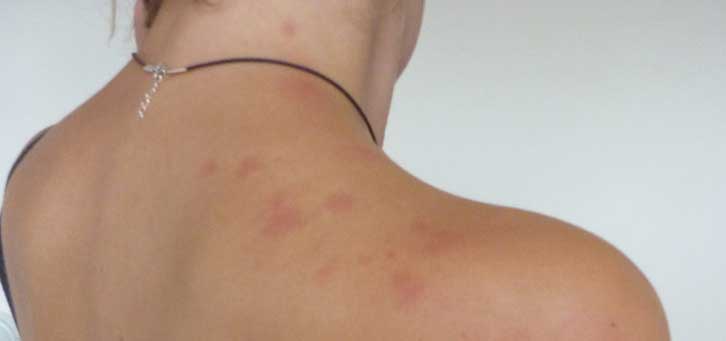Do House Dust Mites Bite Humans?
House Dust mites–at a mere third of a centimeter in size, they’re so small you need a microscope to see them, but they can cause significant problems in your home. As part of the arachnid family, they are a distant kin to spiders.
You’ve probably heard some pretty gross stories about dust mites living in mattresses, carpeting, and other fibers. You may have even heard that these little pests bite humans; is it true?
We’re going to get to the bottom of that and teach you some important differences between dust mites and bedbugs.
What do they Eat?
If you’re eating anything right now, you should probably put it down. The cold, hard facts about dust mites aren’t exactly pretty.
Dust mites feed on the dead skin cells that your body sheds each night when you sleep in your mattress.
While this sounds pretty gross when you consider insects like mosquitoes that suck your blood, taking what your body has gotten rid of almost seems like a courtesy.
Do Dust Mites Bite Humans?
We know they eat dead skin, but is it true that they bite humans?
Luckily, the answer is no. House dust mites don’t bite because they can’t bite. Their mouths aren’t like ours; they have no teeth, no tongue. They use a digestive enzyme to break down their food (skin cells).
This doesn’t mean that dust mites don’t cause any harm. People often think that dust mites bite because they develop skin problems such as hives that they mistake for bites. These allergic reactions are quite common.
In fact, enzymes found in dust mite droppings can cause harm to your immune system and even breach your body’s cell defenses.
This triggers a reaction in some people, especially individuals who are prone to strong allergy symptoms. A recent medical study proved that these dust mite enzymes aggravate allergies much like pollen, causing similar symptoms.
Seasonal allergies are annoying enough, but dust mites can cause problems year-round.
While dust mites do not bite humans, they have been linked to the following diseases:
- Hay fever
- Eczema
- Asthma
- Conjunctivitis
- Dermatitis
- Migraine Headaches
To confirm that mite exposure is the cause of any of these conditions, doctors must run clinical allergy tests.
If you are sensitive to dust mites, you can realistically reduce the problem by purchasing special impervious-to-dust-mite cases for your pillows, mattress, and box spring.
Because heat will kill dust mites, you should wash your sheets once a week in water that is at least 140 degrees Fahrenheit hot.
It’s also a good idea to remove any items that collect a lot of dust from your sleeping area.
How do Dust Mites Differ from Bed Bugs?
If you truly have been bitten, the more likely culprit is a bed bug. Unlike dust mites, bed bugs actually do bite; they feed on blood.
Their bites can leave tiny, intensely itchy bumps and even cause hives throughout your body. A tell-tale sign of bed bugs is finding small specks of blood in your sheets.
Another marked difference between bed bugs and dust mites is that bed bugs are large enough to see–if you’re unfortunate enough to see one of these six-legged parasites at work, that is.
They are also much harder to get rid of, because they are resilient and can travel in nearly any fabric.
Image credits: Richard Thomas

